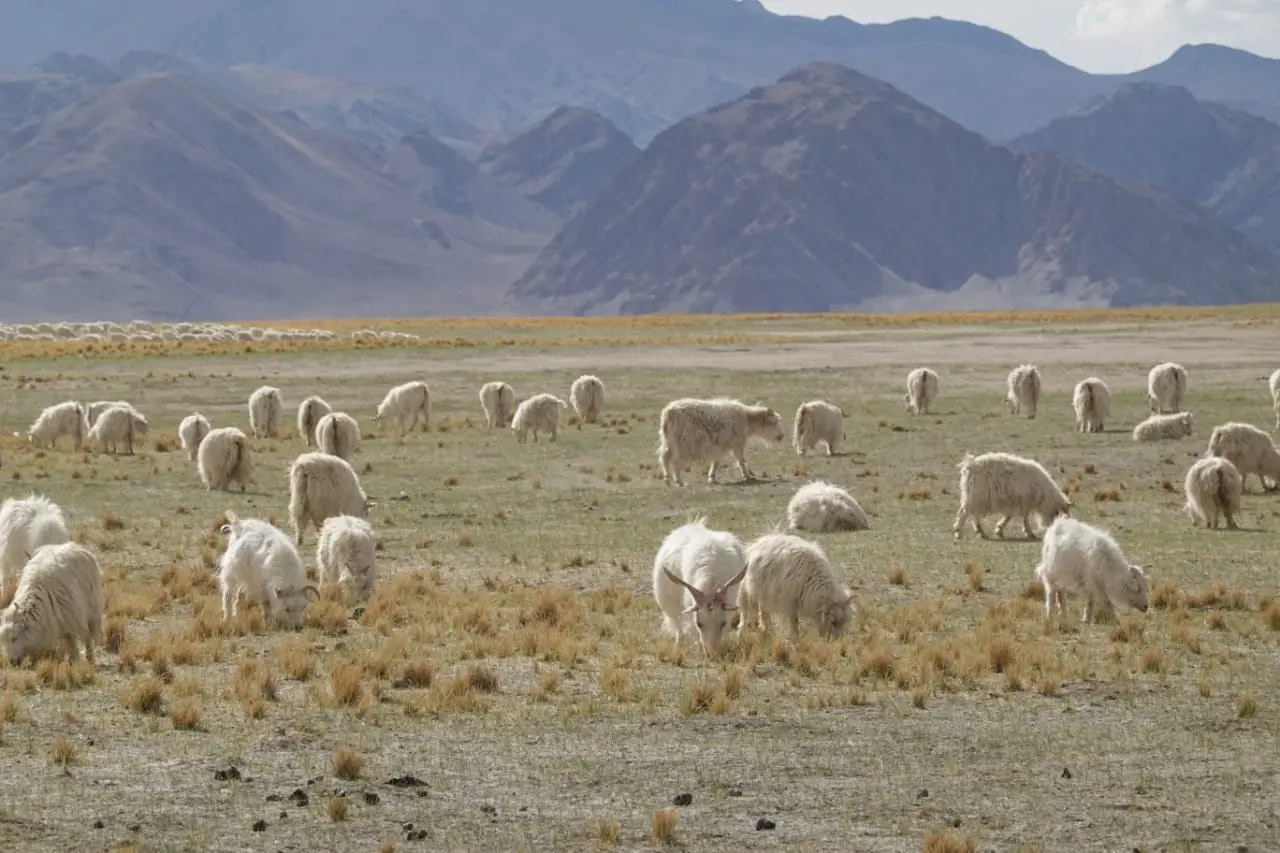
Cashmere - the yarn of yarns

Where does your cashmere come from?
Most of cashmere comes from the cashmere goats raised by farmers and local communities in the region around the vast grasslands of Gobi desert and Taklamakan desert which stretches from Northern China into Mongolia.
Beautiful things should be for everyone
What was once rare, expensive and available to a select few is now easily accessible and affordable because of fast fashion. This was a win-win situation for both farmers and the fast fashion industry. Farmers had the opportunity to make money (even though most of the money went into the pockets of middle men) and improve their quality of life. Fast fashion industry could attract customers with the lure of cashmere which was once strictly haute couture. A good opportunity for the farmers in short term turned out to be a really bad decision long term for not only farmers but the goats, environment and cashmere industry in general.
But at what cost?
A single goat sheds about 200 grams of down once a year during the molting season from March to April. Not enough even for a scarf. This limit of raw fibers and the penny pinching business model of fast fashion which is needed to support mass production and affordable pricing has led to unsustainable and unethical production of cashmere. The only way farmers could deal with the competition and the sheer volume demand was by raising more goats.
Overgrazing is one of the most prominent causes of desertification of grasslands in the region which is happening at an alarming rate. Climate change makes matters worse. Quality of grasslands has a direct impact on the quality and quantity of raw fibers, which are thicker and fewer than ever. Average fiber thickness has increased from 15.5 microns to 15.8 microns, which might not seem a lot but actually is when dealing with fibers five times thinner than human hair. What do farmers do? Raise more goats. Ever shrinking grasslands and an increasing goat number means the desert will consume the whole grasslands soon enough and there will be no more cashmere - until something is done.
Responsible cashmere
Only way to ensure that the cashmere we use is high quality, sustainable and traceable is to have a holistic approach towards the cashmere supply chain.
Our supplier in Nepal is directly involved in the whole supply chain from the farming process, combing, dehairing, spinning to knitting and weaving. They source raw fibers directly from farming families in Bayanhot, Inner Mongolia & Qinghai. Cutting down most of the middle men ensures that farmers make the money they deserve and not the middle men. This incentive driven supply chain assures fair and ethical practices throughout the supply chain which is good for the environment, the goats and the quality of the cashmere. Not to mention, they also build strong personal relationships with the farming families in the process.
These farmers can help raise awareness within their community, which is equally important. More farmers see the benefits of sustainable cashmere and follow suit. Our supplier also provides technical assistance to farmers in partnership with the local government to improve the quality of the grassland.
Made with
Mobirise